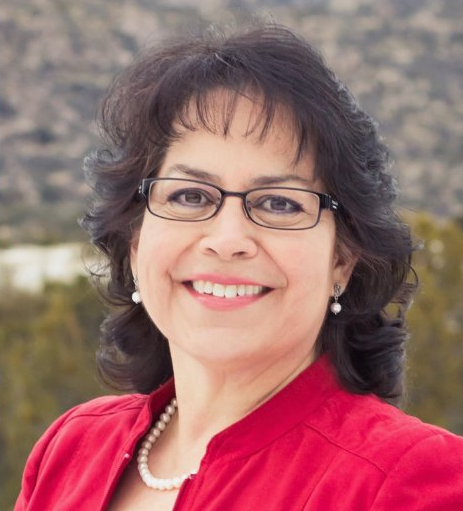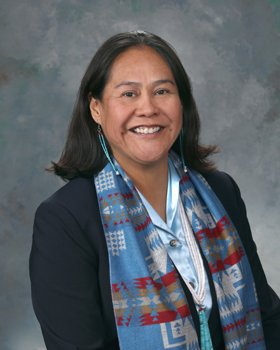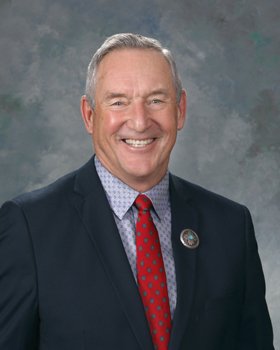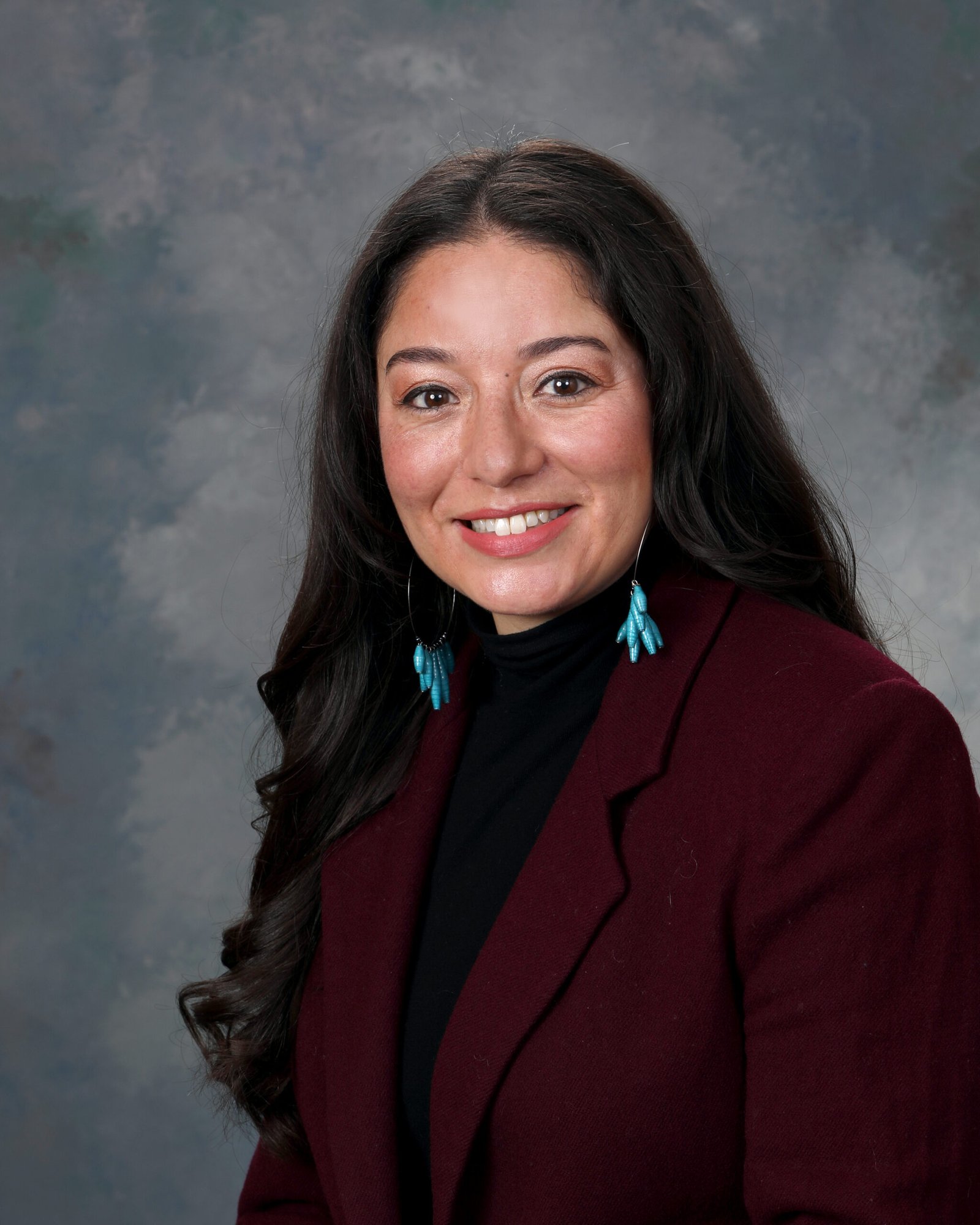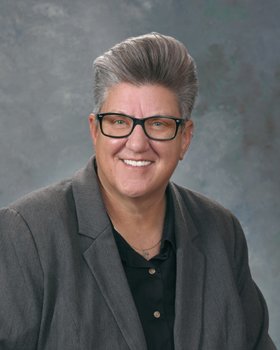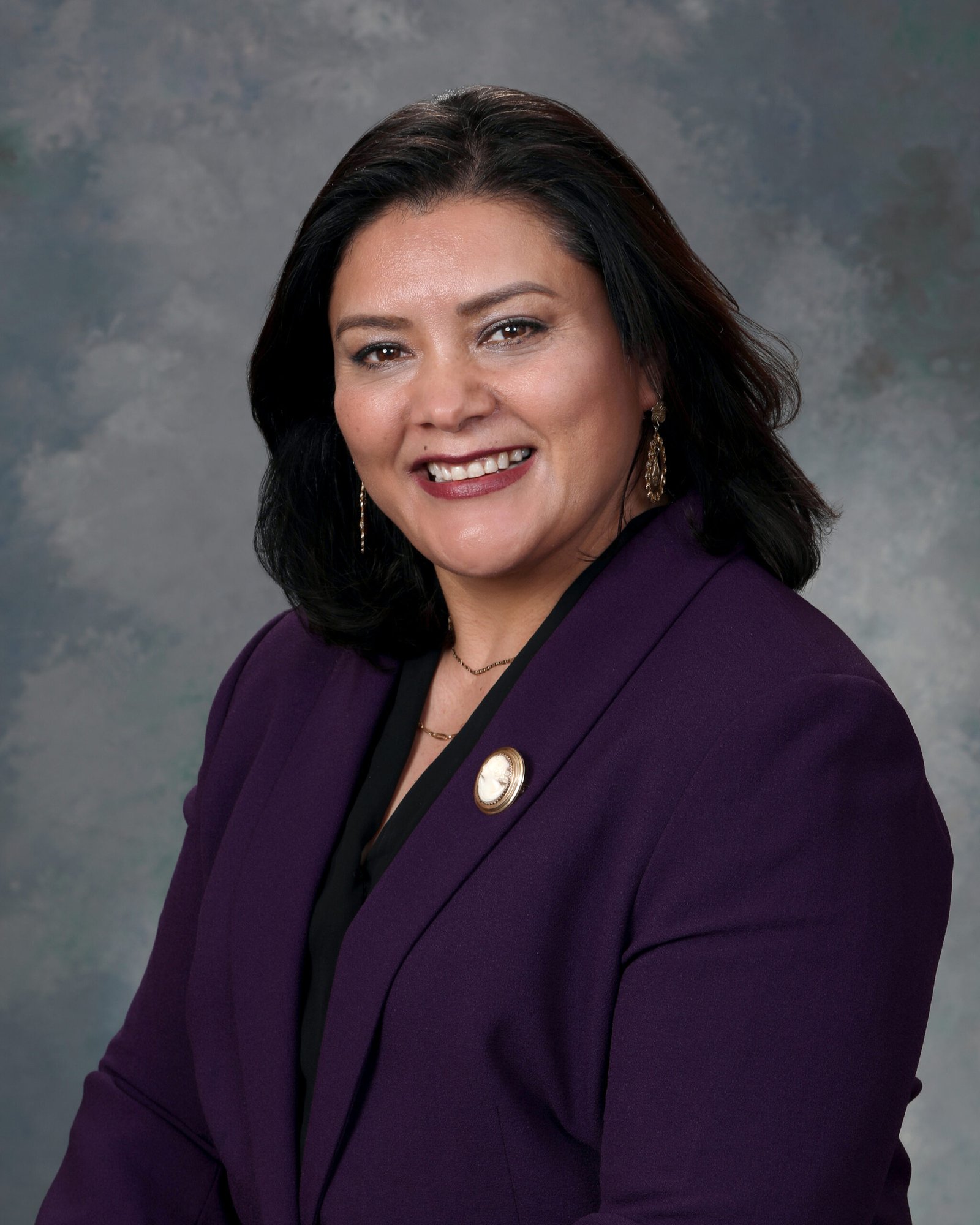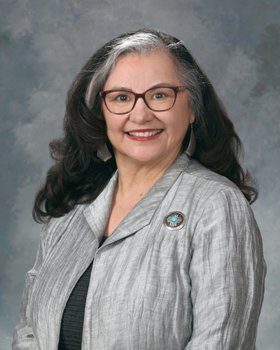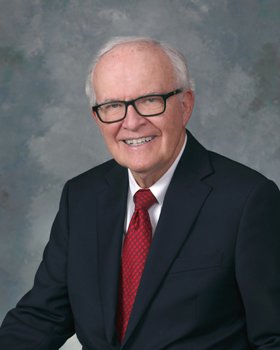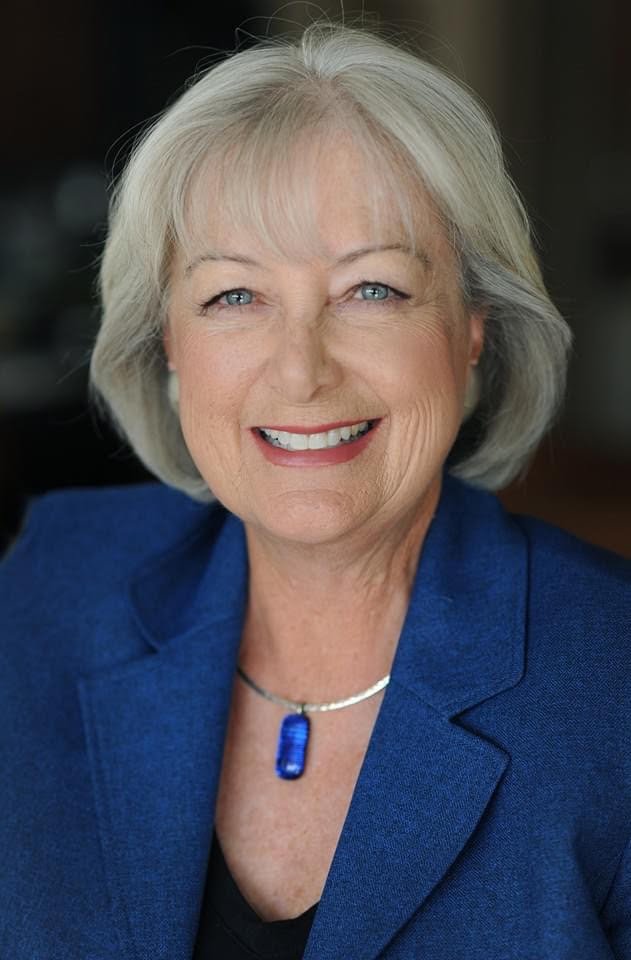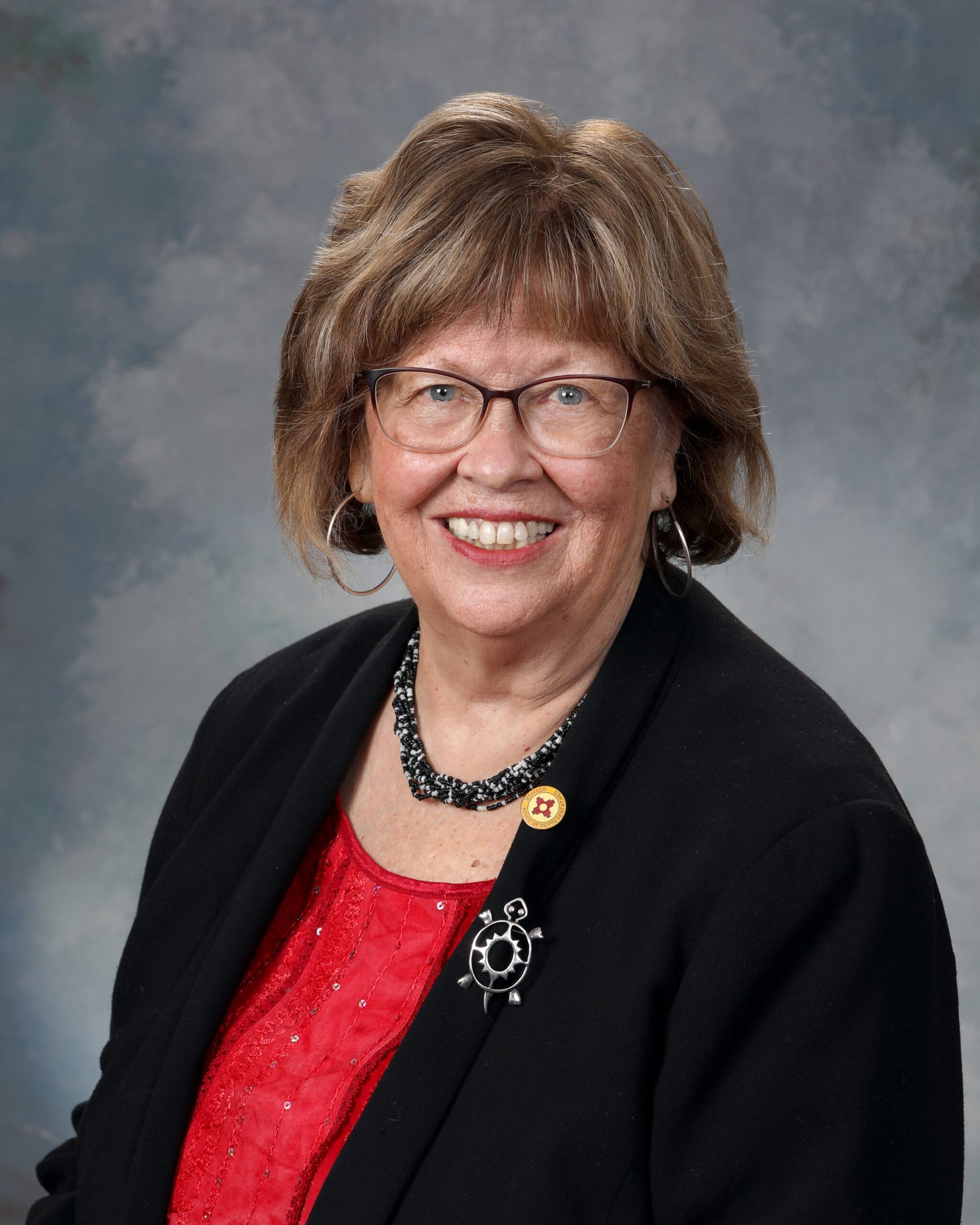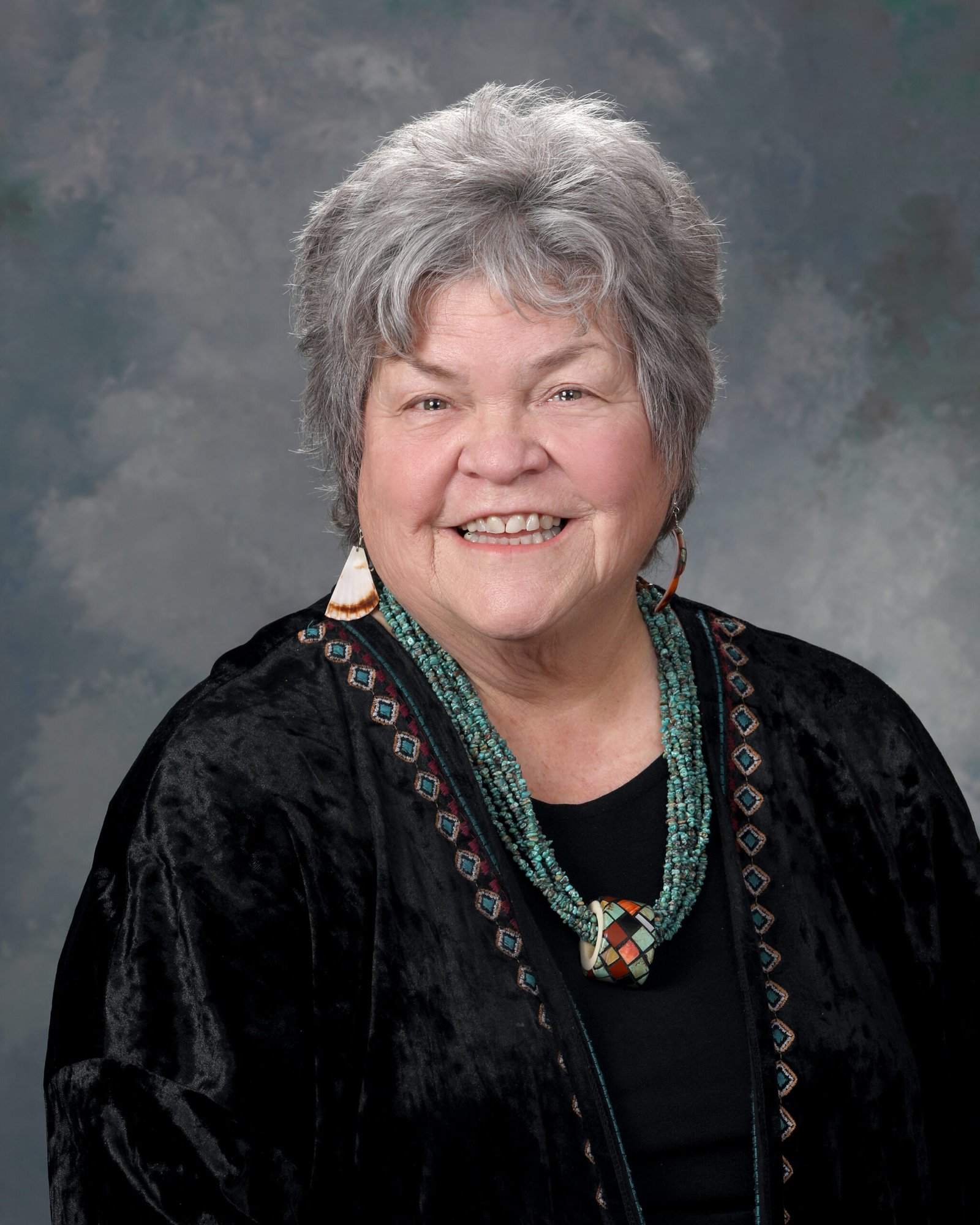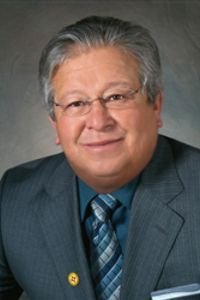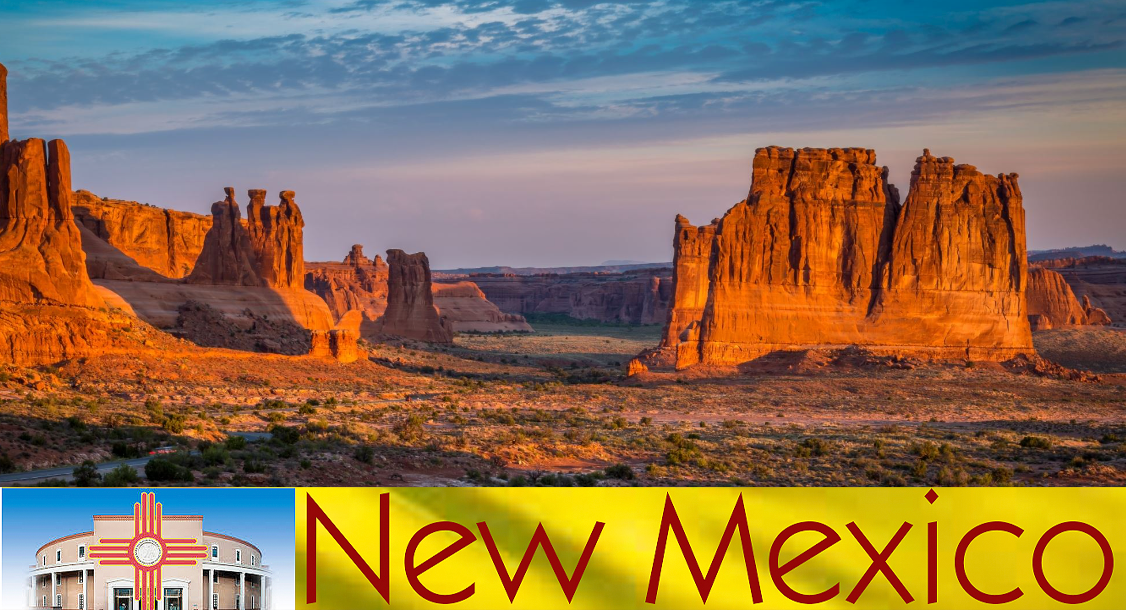

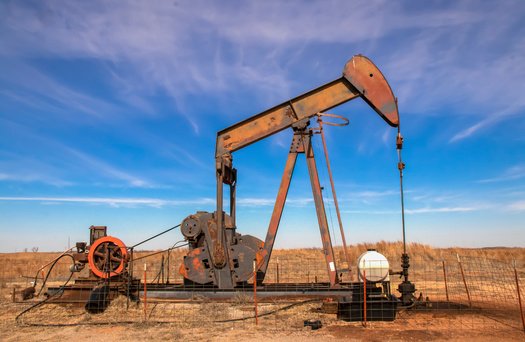

The case:
New Mexico’s Office of Renewable Energy states: “New Mexico has an abundance of sunshine, wind and geothermal resources, making it a natural location for renewable energy production and clean energy jobs. In fact, New Mexico is ranked second in the nation for potential solar-generated electric power production and tenth in wind potential. Taken together, New Mexico has more renewable energy potential than any other state.”
The state’s 2019 renewable portfolio standard law set new goals for investor-owned utilities requiring that 50% of their electricity retail sales come from renewable resources by 2030, 80% by 2040, and 100% by 2045. This has helped spur renewable energy investments. By 2022 wind energy supplied 35% of total in-state generation. but coal remained the second-largest source at 32%, natural gas provided about 26% and solar energy supplied only about 7%.
In 2022 New Mexico’s clean energy sector employed 12,014 workers, an increase of 8.1% from 2021, the highest rate of job growth in the country and small businesses accounted for nearly 3 out of every 5 clean energy jobs (56%). These clean energy jobs earnings are 11.7% higher than the state’s medium wage. A report, Forecasting U.S. Clean Energy Job Creation by State, projects 39,548 more renewable energy jobs will come to New Mexico by 2050.
The clean energy sector offers training for potential workers. The Inflation Reduction Act, passed in 2022, has provisions and programs to assist Justice40 communities obtain high paying jobs. New Mexico can prosper from the IRA’s programs and incentives – the law is infusing $370 billion into our economy for clean energy.
Enacting clean energy policies has shown positive economic results but so much more needs to be done.
The state should promote its natural renewable energy resources fully to ensure help mitigate the climate crisis. Extreme weather caused by the climate crisis has led to devastating fires and drought. All of which continues to be fueled by the fossil fuel industry.
In 2022, a congressional committee report found air pollution resulting from oil and gas was a main driver of climate change, and the industry must take responsibility for preventing further damage to the environment. As the second-largest oil-producing state in the country and one of the leading gas producers, New Mexico is responsible for over 50% more greenhouse gas emissions than the national average.
Oil production in New Mexico’s Permian Basin has increased nearly ten-fold since 2010, leading to a surge of devastating air, water, and climate pollution. Recently, fossil fuel companies have been investing more heavily in our Permian Basin because fuel demand surged with OPEC policies, and the Russian war in Ukraine. Fossil fuel producers saw an opportunity to increase production. Now, analysts have predicted the region’s fossil fuel production would continue to grow faster than some of the biggest-producing countries in the world.
New Mexico has more than 62,000 oil and gas facilities. It’s easy to see that The state produces about seven times more natural gas than it consumes with most of it being used for electric power generation while the rest is being exported to neighboring states.
In 2022, New Mexico’s annual crude oil production reached an all-time high of about 574 million barrels, almost 9 times greater than it was in 2010.
New Mexico’s crude oil refinery can process about 110,000 barrels of crude oil per calendar day. Most of it comes from the Permian Basin and serves markets in the southwestern United States and northern Mexico.


New Mexico is a state with a little over 2.1 million people. Clearly its fossil fuel resources are mainly being used to make money for the industry while fueling the climate emergency and hurting health outcomes.
The 2022 congressional committee report found oil and gas companies were likely under-reporting their emissions of methane air pollution to the federal government. The report estimated that about 12% of emissions sources in the Permian were responsible for half of the region’s releases.
Currently, analysis estimates that New Mexico’s oil and gas companies emit over 1.1 million metric tons of methane annually, which has the same short-term climate impact of 28 million automobiles. That’s approximately 5 times more pollution than EPA data suggest and has the same near-term climate impact as 25 coal-fired power plants.
The Oil and Gas Threat Map shows over 144,000 people in New Mexico live within a half-mile of an oil and gas facility, including 20% of the state’s Indigenous residents. This threat radius is correlated with adverse health outcomes, including cancer, respiratory illness, fetal defects, blood disorders, and neurological problems stemming from chemicals associated with oil and gas production.
Pollutants from oil and gas facilities in New Mexico include the carcinogen benzene, hydrogen sulfide, and volatile organic compounds that can contribute to the formation of ground-level ozone (smog), according to the EPA. Air pollution from fossil fuels is responsible for more than 13% of deaths in people aged 14 and older in the United States. Black, Brown, Indigenous and low-income communities are disproportionately impacted since these groups, due to systemic racism, tend to live in neighborhoods with more pollution. Oil and gas extraction has pushed air pollution levels so high in southeast New Mexico that the Permian Basin region is now violating federal smog standards.
Oil and gas extraction has pushed air pollution levels so high in southeast New Mexico that the Permian Basin region is now violating federal smog standards.
Oil and gas operators spill toxic liquid waste an average of four times per day in New Mexico, endangering land, air, water and public health. Too often, these toxic spills affect streams, groundwater, and public lands.
As New Mexico faces increasing aridification from the climate crisis, oil companies use vast quantities of New Mexico’s dwindling freshwater resources for fracking. The oil and gas industry turns 14 billion gallons of water into toxic waste every year to drill, frack, and produce wells. This is equal to the amount of water used by 1/8 of New Mexico’s population. The state can’t afford this precious resource to be allocated for fossil fuel profits while the industry has put $10 billion in clean-up costs on the shoulders of New Mexico taxpayers.
New Mexico’s economy should run on clean renewable energy. People are often told that the oil and gas industry is the key to New Mexico’s economic prosperity. If that were true New Mexico wouldn’t rank 50th in education, 49th in terms of citizens to succeed and have the 44th worst economy out of all states. Our infrastructure is the 5th worst in the U.S. and for a third year in a row we posted the third-highest poverty rate, according to the U.S. Census Bureau. If these social statistics weren’t bad enough the 2022 KIDS COUNT Date Book ranked N.M. last in child well-being.
Additionally, the climate crisis is increasing costs to every New Mexican. Farmers in New Mexico already pay $73 million annually because of climate crisis warming temperatures and extreme weather. New Mexicans pay $248 million more in energy bills every year to keep cool. Estimates indicate the state pays $1.6 billion every year because of the changing climate.
The fossil fuel industry has had a disproportionate economic negative impact on New Mexico.
Utility-scale solar photovoltaic (PV) facilities provided only around 5% of New Mexico’s total in-state net generation in 2022. Yet, according to the Office of Renewable energy: “The New Mexico State Land Office has about nine million acres of land available for lease to renewable energy companies and has a sustained track record of partnering with companies to create successful projects. Renewable energy leasing is expected to be the largest growth area for commercial leasing, providing a tremendous opportunity to earn more money for State Trust Land beneficiaries – which include public schools, universities, and hospitals throughout the state – while creating jobs, advancing clean energy, saving taxpayer money, and caring for the land.”
New Mexico Leadership Council
Debbie Sariñana
State Rep., Veteran
Debbie currently represents District 21 and serves as Vice-Chair of House Energy, Environment & Natural Resources Committee, is a member of the House Appropriation and Finance Committee and is Chairwomen of Science & Technology Interim Committee. She also serves on the Water & Natural Resources Committee and the Radio Active & Hazardous Materials Committee. A former computer programmer at White Sands Missile Range, NM, and member of the U.S. Air Force Reserves. Debbie is currently a retired high school math teacher.
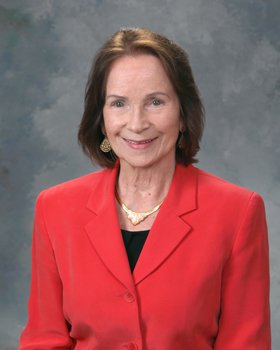
Mimi Stewart
State Senator
President Pro Tem When elected. Stewart became the first president pro tem from Albuquerque in 15 years. The pro tem presides over the Senate in some circumstances and serves as leader of the Committees’ Committee – a panel that chooses the chairpersons of the Senate’s standing committees and their membership. Committee chairpersons have substantial influence over the flow of legislation, such as what gets heard and when. She also serves on the Water & Natural Resources committee, Rules and others.
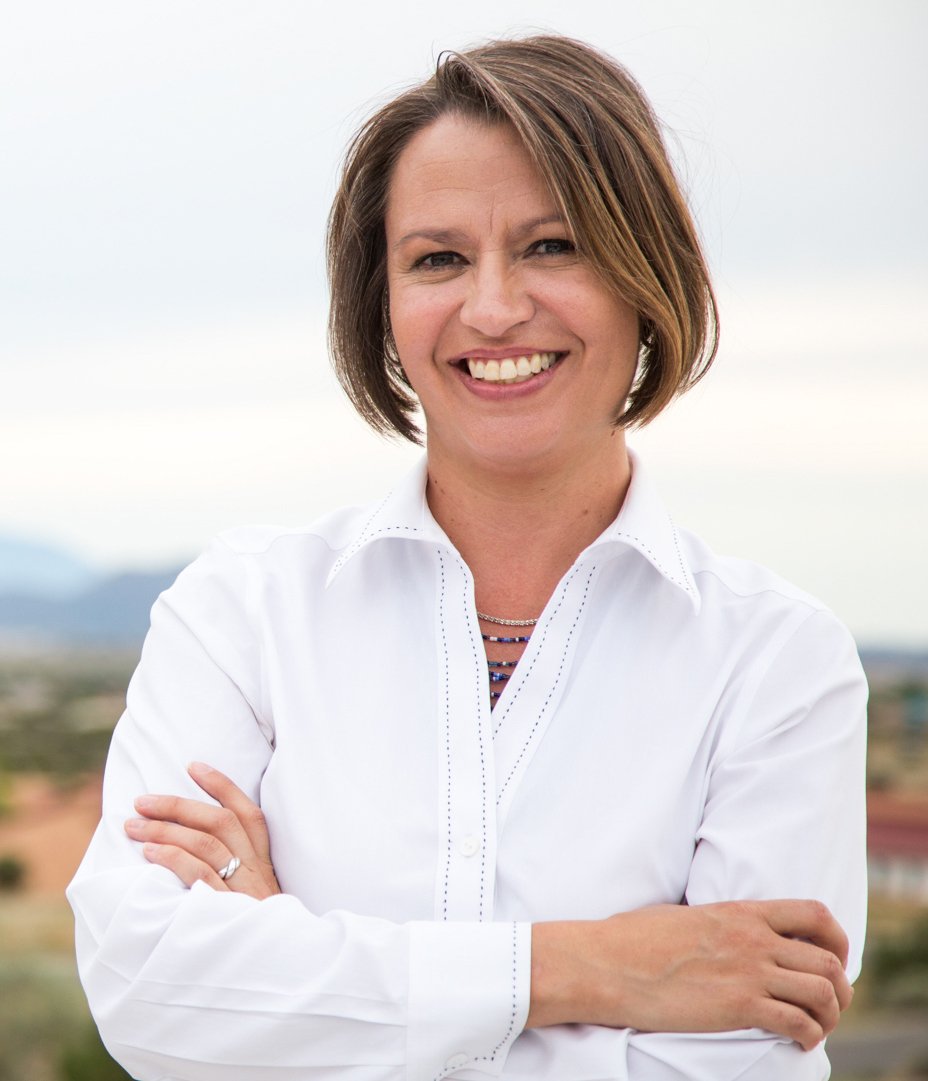
Stephanie Garcia Richard
Land Commissioner
The first woman, the first Latina, and the first educator to serve in the position as New Mexico’s Commissioner of Public Lands. Stephanie became a State Rep. in 2012. During her six years as a State Rep. she championed laws to increase access to a quality education, transparency, and investments in renewable energy, job training, and economic development. As Commissioner, Stephanie is focused on raising as much money as possible while always keeping an eye toward stewardship and preserving the land for generations to come.
Tammy Fiebelkorn
City Councilor
City Councilor Tammy represents District 7, Albuquerque’s mid-heights including uptown and parts of the near northeast heights. She worked an on energy efficiency program design and evaluation. She has worked with the City on numerous projects including funding and implementing low-income energy efficiency retrofits in disadvantaged neighborhoods, updating the city’s Energy Conservation Code, and developing coordinated positions on energy and transportation cases at the NM Public Regulation Commission.

Harold Pope
State Senator, Veteran
District: 23, Santa Fe, County: Bernalillo. He is the Sen. Education Vice Chair, and is a Member of the Sen. Conservation Committee. He also serves interim as Vice Chair on the Military and Veterans’ Affairs Committee, along with other committees. During his 20-year career in the Air Force he served as an Acquisitions Officer and Chemist, working on satellite programs, weapon systems, and nuclear deterrence, and as a Security Cooperation Officer. He was appointed Facilities Transition Advisor, with Mayor Keller’s Administration for the City of Albuquerque.
Shannon Pinto
State Senator
Pinto represents the 3rd district, which includes Shiprock, New Mexico and part of Navajo Nation. Shannon is the granddaughter of the late State Senator John Pinto, a renowned WWII Navajo Code Talker who served in the Senate from 1977 until 2019. A member of Navajo Nation, Pinto was born and raised in Tohatchi. She earned an Associate’s degree in Business from the Southwestern Indian Polytechnic Institute and a Bachelor of Business Administration from the University of New Mexico.
William Soules
State Senator
District 37. Born and raised in the Mesilla Valley, Soules has been a lifelong advocate for the interests of students. He has served as a state senator since 2013, taught in the Las Cruces Public Schools for 16 years, and served as president of the New Mexico School Board Association and a member of the Las Cruces School Board. Soules currently serves as the senate representative to the New Mexico Established Program to Stimulate Competitive Research (NM EPSCoR).
M. HART Stebbins
NM Resources Trustee
At the New Mexico Office of Natural Resources, Trustee Maggie Hart Stebbins is responsible for leading state efforts to ensure contaminated, injured or damaged natural resources are restored for the betterment of the environment and the benefit of New Mexicans and visitors to our beautiful lands. The Office assesses injury to natural resources caused by the release of hazardous substances and seeks compensation from the potentially responsible parties for restoration of those injured resources.
Eric Olivas
Commissioner
Commissioner Olivas, District 5, has deep family roots in Bernalillo County, Uptown Albuquerque and the East Mountains. Commissioner Olivas is president of his neighborhood association and previously served on the Northeast Community Policing Council and on the Civilian Police Oversight Board.
Olivas has a local landscaping and plumbing business.
Andrea Romero
State Representative
District: 46
County: Santa Fe. Andrea is a lawyer, and entrepreneur who supports small businesses. As a Rep. she serves Española and Pojoaque Valleys, northwest Santa Fe, and four sovereign Pueblos: Nambe, Pojoaque, San Ildefonso, and Tesuque. She’s working to increase job training and apprenticeships, create wind and solar jobs and expand broadband. She’s a defender of our water resources, the environment and underserved populations.
Carrie Hamblen
State Senator
District: 38, County:Doña Ana. Carrie serves on the Conservation Committee and was a former broadcast journalist. In 2012, Carrie became the CEO/President of the Las Cruces Green Chamber of Commerce, an organization which focuses on creating support for local businesses and creating more awareness about sustainable communities. Carrie serves as the liaison between the Green Chamber and private, nonprofit, and governmental entities.
Yanira Gurrola
State Representative
Yanira Represents District 16. Outside of politics, Gurrola is a bilingual math teacher.
She works as a professional development coordinator and was previously a member of the board of Dual Language Education New Mexico. Gurrola was born in Chihuahua, Mexico, and moved to Albuquerque, New Mexico, in 2000.
Tara Lujan
State Representative
Represents the 48th district. Lujan was appointed to the House by the Santa Fe County Commission on July 23, 2020. Lujan is a native of Santa Fe. Prior to her nomination to the House, Lujan served as the human resources director of the New Mexico State Treasurer’s Office.
Antoinette Sedillo Lopez
State Senator
Attorney, and retired professor who has served in the legislature since 2019. Antoinette sponsored a bill that would have placed a moratorium on fracking. Antoinette is a long-time community leader focused on the critical social, economic, environmental, and civil rights issues affecting the lives of all New Mexicans. After serving as Law Professor at UNM for more than twenty-five years — including eight years as Associate Dean.
William Tallman
State Senator
Bill serves District 18. As State Senator, he was designated a “Super Hero” by the NM AARP. During the 2018 Legislative Session, Bill received a “Focused and Finished Award” from the NM Association of Commerce and Industry for co-sponsoring HB193, the Early Childhood Care Accountability Act. Prior to the legislature, Bill served as Deputy City Manager of Santa Fe, NM, where he worked with 1,500 employees and a budget of $250 million.
Kristina Ortez
State Representative
Elected to serve HD42 in 2020. She has spent her career dedicated to improving her community and protecting the environment. Ortez’s community experience includes being Executive Director, Taos Land Trust, Board Chair, Conservation Voters New Mexico, Founder and Vice-Chair, Alianza Agri-Cultural de Taos, Troop Leader, Girl Scouts Troop 1112. She holds aB.A., Harvard University, M.P.A., University of New Mexico, and is a proud mother of two daughters
Joanne Ferrary
State Representative
Ferrary has represented District 37 since 2016. She is currently Chair of the Consumer and Public Affairs Committee and a member of the Health & Human Services Committee. She remains dedicated to expanding healthcare in New Mexico, fighting for women’s rights, and investing in public education. Before serving in Albuquerque, Joanne served on the Planning and Zoning Commission for the City of Las Cruces.
Joy garratt
State Representative
Joy is a member of the New Mexico House of Representatives, representing District 29. She earned her B.S. in liberal studies with concentrations in history and communications from Excelsior College, University of the State of New York and her M.A. in educational leadership from the University of New Mexico. She also received a post-BA teacher licensure from the University of New Mexico. Garratt has worked in public affairs and public relations and as an educator.
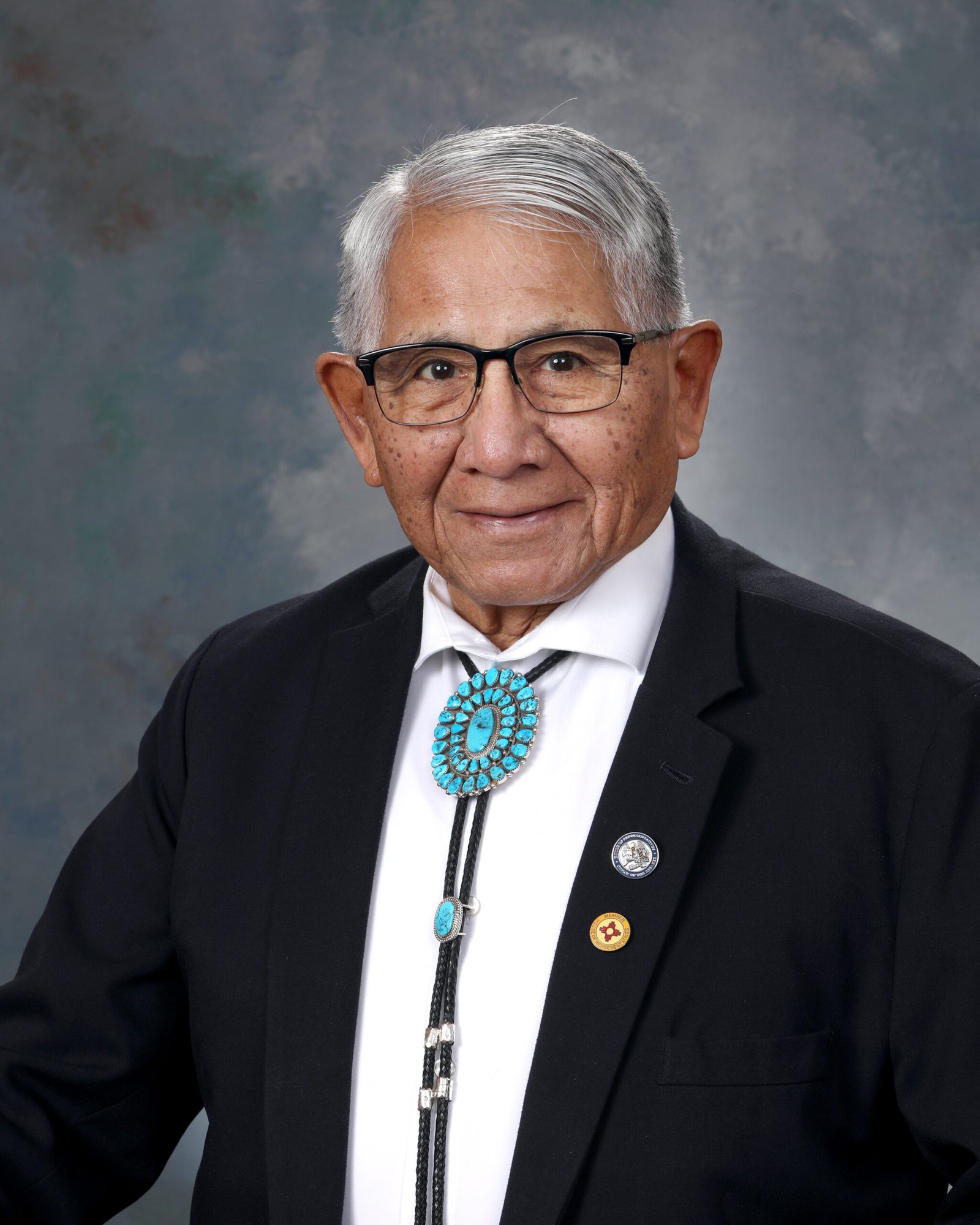
Anthony Allison
State Representative
District: 4 County: San Juan. Allison is a member of the Navajo Nation. He serves as Vice Chair on the House Agriculture, Acequias and Water Resources Committee. Other committees include: House Appropriations and Finance, Joint Indian Affairs Committee, as Advisory on the Joint Economic and Rural Development and Policy Committee, and Standing Advisory on the Legislative Finance Committee. Allison worked as a journeyman electrician. in his district.
J. Anyanonu
State Representative
Janelle is the New Mexico State Representative for District 19, Bernalillo County. “We are the caretakers of our environment for future generations and our policies must always reflect that truth. I support environmentally-conscious regulation statewide, including any legislation that furthers the state’s goal of achieving net-zero emissions by 2050,” said Rep. Anyanonu. She is a member of the Commerce and Economic Development Committee and the Government, Elections, and Indian Affairs Committee.
Susan Herrera
State Representative
Susan represents District 41. Prior to serving District Susan was the founding executive director of the Los Alamos National Laboratory Foundation (LANLF). During her tenure, the LANLF priorities included a five-year $20 million Inquiry Science Program in 20 NNM school districts with 1,000 teachers and 25,000 students in partnership with the LANLF and Smithsonian Institution.
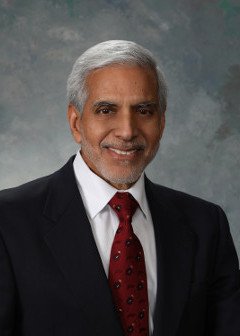
Abbas Akhil
Fmr. State Rep.
District: 20
County: Bernalillo.Abbas Akhil is an Indian-American politician and engineer who served as a member of the New Mexico House of Representatives from 2019 to 2021. When he took office on January 15, 2019, Akhil became the first Muslim member. Born in India, Akhil earned a BA there and a Masters in N.M. Prior to entering politics, Akhil worked as an engineer at Sandia National Laboratories.
Eliseo Lee Alcon
State Representative
The honorable Representative passed in 2025. We miss him dearly. He Represented District 6. Eliseo was an Army Veteran, Bronze Star recipient for his service as a combat medic in Vietnam. He’s a retired magistrate judge. Eliseo was the Chair of the House Labor, Veterans and Military Affairs Committee, and served on Joint Courts, Corrections and Justice Committee, Joint Indian Affairs Committee House Judiciary Committee, Joint Military and Veterans’ Affairs Committee and the Joint Radioactive and Hazardous Materials Committee.
Office of State and Community Energy Programs (SCEP)
The Office of State and Community Energy Programs (SCEP) works with state and local organizations to significantly accelerate the deployment of clean energy technologies, catalyze local economic development and create jobs, reduce energy costs, and avoid pollution through place-based strategies involving a wide range of government, community, business and other stakeholders.
Office of Small and Disadvantaged Business Utilization (OSDBU)
The OSDBU goal is to provide maximum practicable opportunities in the Departments’ acquisitions to all small business concerns. In doing so, the Department will meet/exceed statutory prime small and subcontracting goals. Our Small Business Goaling Reports are tracked and monitored via http://smallbusiness.data.gov/, an official web site of the federal government.
What People Say About Us
Client Testimonials




